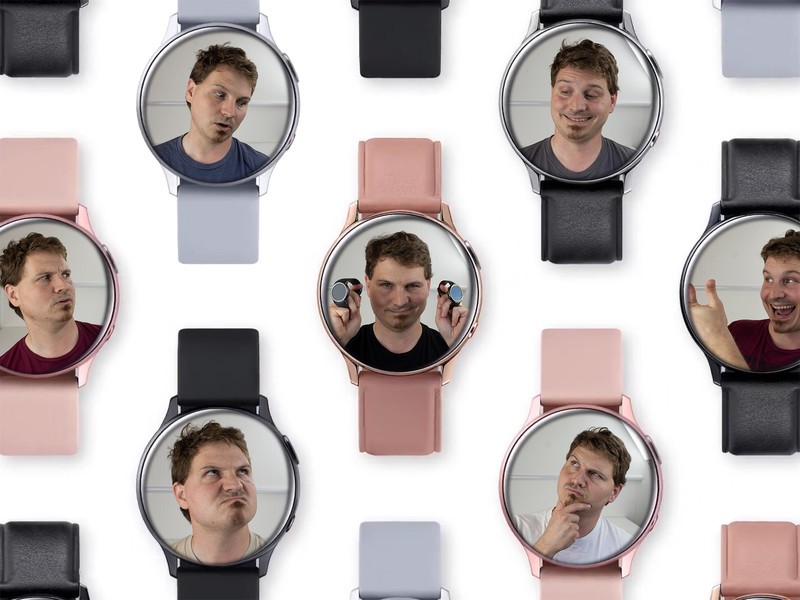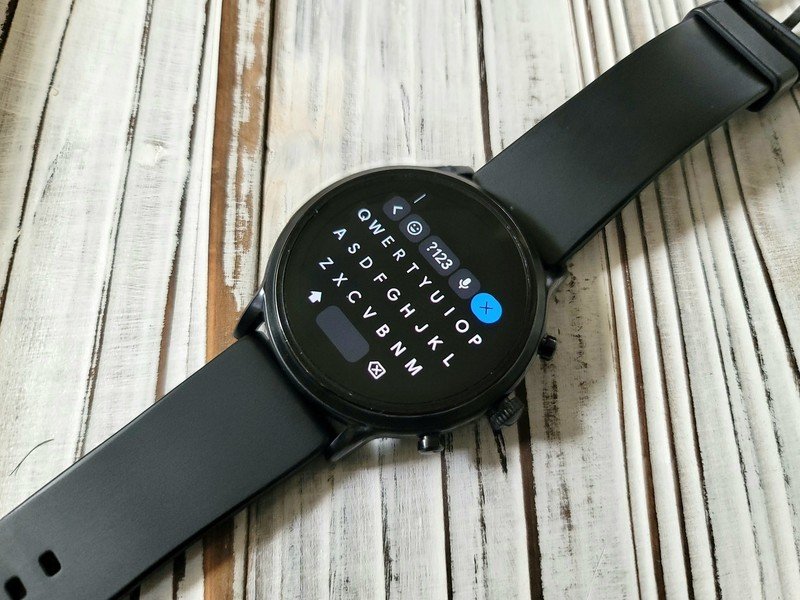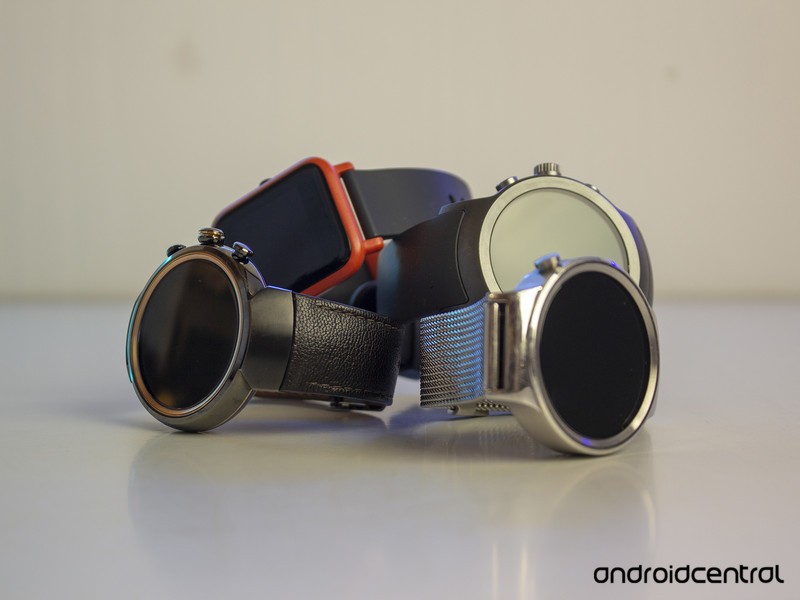
Source: Nick Sutrich / Android Central / Samsung
When my son was born over 7 years ago, my “new daddy gift” was the original Samsung Galaxy Gear. I got the one with the hot orange band because I wanted to make a statement. But, unfortunately, the Galaxy Gear didn’t last me long as I quickly upgraded to a Samsung Galaxy Live — one of the original two Android Wear-powered watches that were poised to show the world how a smartwatch was supposed to be. That cycle went on and on — as a new platform was released, a new update was unveiled. And yet, the experience seemed to get worse over time, not better.
Fast forward to today and, despite all the incredible-looking smartwatches on the market, I haven’t worn one daily since 2019. From sluggish performance, to terrible battery life, to the general malaise I experienced over the years with Google’s flailing Wear OS, I just became even more frustrated. When you threw in Samsung’s inability to provide proper Android-level notifications (read: notifications I can actually do something with) — I felt like I was constantly trying to justify my smartwatch purchases.
VPN Deals: Lifetime license for $16, monthly plans at $1 & more
Thankfully, MWC 2021 has finally given me a reason to care about Android smartwatches again with the announcement of Wear OS with One UI, coming first to Samsung’s next smartwatch, which, presumably, is the Galaxy Watch 4. At the event, Samsung didn’t specify the model but said it would debut at the next Samsung Unpacked event later this Summer, further solidifying its position atop the list of best smartwatches.
Real solutions for real problems
Source: Google
When taken as a whole, there’s little argument that Samsung’s Tizen platform is a better smartwatch experience compared to current Wear OS watches. Battery life is significantly better, performance is an entire generation above what’s found in Wear OS, and fitness applications are just better on Tizen. Thankfully, all of that is coming to the new Wear OS, complete with Wear OS’s significantly better handling of notifications compared to Tizen’s lackluster efforts.
Performance enhancements — as much as 30% faster, according to Samsung’s presentation at MWC 2021 — are at the heart of the experience. We’re also seeing a focus on multi-day battery life, something Tizen was actually quite good at, while Wear OS consistently floundered on this expectation. There’s no doubt that smartwatches have had a difficult set of expectations to meet, as consistent performance and long-lasting battery life haven’t been realities in the digital world until very recently.
The new Wear OS seems to meld the best of both worlds between Google and Samsung’s existing platforms.
I spoke with Carmi Levy, a Technology Analyst who is well-versed in the world of smartwatches and smartphones, about this very topic. He seemed quite happy with the new path going forward.
Wear OS was significantly compromised by the limitations of the ancient chipsets its devices were forced to adopt. The lack of new, more efficient processors meant “new” Wear OS devices simply couldn’t compete on such basic wearable metrics as battery life, app performance, and stability. The new platform must absolutely address these concerns, and then some, with powerful new hardware that exceeds consumer expectations around performance and battery life. It’s game over if it doesn’t.
Carmi Levy, Technology Analyst
Samsung talked specifically about prioritizing health applications in the new Wear OS, which includes a unified health platform. This presumably involves rolling Samsung Health and Google Fit into a single, cohesive platform, but will also require it to go even further to ensure health sensors are more accurate and consistent. While that sounds like marketing speak, Samsung says its new Wear OS devices will be using a “dedicated ultra-low power core” that can run the heart rate sensor at all times without negatively affecting battery life.
Google and Samsung are making this the most developer-friendly smartwatch OS either company has ever produced.
Those are the kinds of enhancements that tell me this is serious business for these companies and not just another half-hearted effort. Watches will have an eSIM built in so that you can go to a carrier store and pick up a watch when you pick up a phone. That also means that most — or maybe even all — smartwatches with the new Wear OS will be able to run on their own without having a phone nearby, signaling that this is a proper platform ready to truly work on its own. The inclusion of all Google apps only furthers that thought.
Additionally, Google and Samsung are ensuring that this is the most developer-friendly smartwatch OS either company has ever made by including existing Android development tools with the new Wear OS rollout. This doesn’t just mean better apps; it also means better watch faces, something Apple has genuinely failed at with its watchOS. Custom watch faces are one of the best reasons to get a smartwatch over a regular watch and one of the reasons I stuck with Wear OS as long as I did.
Do big changes preclude big failures?


While Google and Samsung have been running competing platforms for years, the new Wear OS is finally a way forward for two companies that have had different visions of what a smartwatch should be. In a very real sense, this is the apex of the open concept that Google worked toward with Android, as it appears to be taking the best changes made to the OS over the years and translating them to a watch form factor.
The new Wear OS can be skinned by OEMs, bringing back haunting memories of Android phones’ past.
Case in point: the new Wear OS will ship on Samsung Galaxy smartwatches with a One UI “skin” — although I surmise they’ll avoid that word — so while the base functionality will remain the same as other new Wear OS watches, Samsung’s own “flavor” of Wear OS will have unique advantages over Fossil or TicWatch smartwatches.
While this sounds a bit scary on the surface, this finally gives brands the ability to differentiate their smartwatches in a way that’s more substantial than just offering different watch faces and physical hardware. This homogeny has long been the biggest advantage and disadvantage of Google’s platform because, ultimately, it means most watches retain an identical look and feel despite having new or different hardware.
Levy think this decision won’t necessarily be a problem in the wearables market as it is in the Android smartphone market:
While allowing skinning opens up the potential for all of the caveats that it’s introduced into the Android smartphone market – including significantly delayed operating system updates, inconsistent end-user experiences, and app incompatibilities – it’s fair to assume that end-user behaviors and expectations are markedly different in wearables than they ever were in the smartphone market. Apps don’t play as crucial a role with wearables, and major OS updates during the life of a wearable just aren’t as relevant as they may be with smartphones. Google quite literally had nothing to lose. So if allowing vendors to introduce their own skins gives it some kind of advantage, then it’s absolutely worth the effort.
Carmi Levy, Technology Analyst
But does this mean that OEMs will fall right back into the old cycle of never updating hardware with new software? For Samsung, at least, it definitely doesn’t. At their MWC 2021 conference, Samsung even said that its existing Tizen-powered Galaxy Watches would receive three full years of support, while we fully expect the latest watches to match at least that level. In addition, Samsung’s latest improvements to its phone update cycles mean Galaxy phones will get updates for four years after release, besting even Google’s own update schedule.
It’s going to be interesting to see if some other OEMs fall back into those old traps.
A few old but good ideas are making a comeback — a sure sign that both companies have been listening to feedback.
Google is even bringing back a few old ideas that turned out to be good ones — a sure sign that both companies have been listening to feedback and are committed to building a truly good watch OS. One of the biggest examples I’ve seen so far revolves around watch apps, which will now automatically be installed when the same app is installed on your phone.
This automatic installation was a hallmark of early versions of Android Wear before the Google Play Store was properly embedded into later Wear OS updates. While the handling of these installations was pretty terrible back in the day, Google and Samsung seem to have designed a solution that offers the best of both worlds; automatic installation behind the scenes coupled with a proper app store when you need it.
Leaving a good watch behind


The biggest question right now revolves around the latest WearOS and Samsung Galaxy Watches. While both lines have newer hardware and surely fall in line with the power and other specs required to run the new Wear OS, many OEMs have been dancing around the question of whether their smartwatches will be updated to the new OS.
Few people seem to know when — or if — existing smartwatches will get the new update.
Qualcomm, the maker of the chips that power current Wear OS watches, says that Snapdragon Wear 3100, 4100, and 4100+ platforms will support Wear OS 3.0. Mobvoi, the maker of TicWatch smartwatches, says that it’s working with Google and hopes to have its brand new watches updated. On the other hand, Fossil has said that none of its watches will receive the update. At the same time, Samsung has only spoken about the new Wear OS appearing on the next Galaxy Watch launching later this Summer.
In short, it’s a mess. Or maybe it’s just a mystery? Either way, it’s going to take a while to know for sure.
There’s nothing like starting a new journey by burning the bridges built to get there, but it seems that many OEMs might be content with this strategy. Given what we’ve seen from Samsung and Google so far, however, this is probably a good thing in the end. But, like Windows 11, where Microsoft is enforcing a minimum hardware spec to run its latest OS, the new Wear OS needs to raise its standards in order to deliver an experience that isn’t a mess.
There’s nothing like starting a new journey by burning the bridges built to get there, but it seems that many OEMs might be content with this strategy.
Levy thinks that most users will have accepted that Google and Samsung have “drawn a line in the sand,” meaning that older hardware will fall to the wayside in favor of newer hardware.
Existing Wear OS-powered watches are largely based on already-ancient Qualcomm chipsets, so it would be unrealistic for anyone with knowledge of Wear OS’s checkered history to expect some kind of engineering miracle that allows obsolete devices to somehow magically update to next-generation platforms and services. Likewise, no one expects a circa-2014 Intel processor to run Windows 11, so why would they expect Google and Samsung to apply the same logic to legacy wearables? They had to draw the line somewhere.
Carmi Levy, Technology Analyst
Whether or not users respond positively to this strategy remains to be seen. After all, we saw years of user complaints finally add up to significant changes in the way Android updates are handled. Not only has Google essentially fixed what made skinned versions of Android so difficult to update in the first place, but OEMs have begun to commit to actual update schedules, promising multiple major updates before a device is considered end of life.
While consumer sentiment regarding existing hardware is still up in the air, one thing is abundantly clear: Google needed something — anything — to gain traction in the market. It also gives Samsung the ability to further expand the following it has rightfully earned over the years and, once and for all, unify the landscape in a way that helps everyone, something Levy also agrees with.